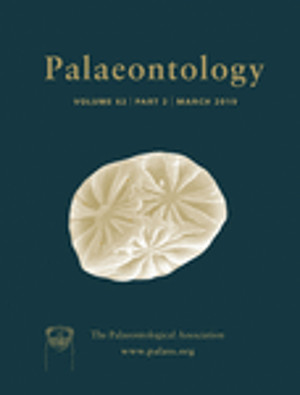Reg. Charity No. 1168330

The life histories of ammonites and the life strategies they employed are difficult to assess without robust modern analogues but placing constraints on ammonite growth rates provides a fundamental first step to understanding this abundant, but poorly understood, fossil group. Here we interpret periodic variations in carbon and oxygen stable isotope profiles from Campanian and Maastrichtian ammonites (Baculites) as seasonally driven and use these records to determine their rate of shell precipitation. Several of these samples are housed in museums and were originally prepared using sealants for display and preservation but testing of these sealants indicated no alteration of the isotopic values of treated carbonate. Diagenetic alteration, as determined by shell microstructure, affected the preservation of isotopic signals, resulting in the loss of seasonal variation in less well‐preserved specimens, and the δ13C signal is more robust than δ18O. The periodicity of isotopic profiles from Baculites shells presented here suggest that these organisms grew at rapid rates (c. 340 mm per year), which may imply an r‐type life strategy in which the animals reach maturity quickly, spawn large quantities of progeny, and die at a young age. Because of the potential mobility of Baculites, reconstructing palaeoenvironmental conditions from these isotopic records is challenging and should be conducted cautiously. Unfortunately, well‐preserved Baculites shells much longer than 350 mm are rarely recovered, which complicates the statistical treatment of potential periodicity in isotopic profiles.